Table of Contents
Rotary Blower for pressure and vacuum service is universally used with gas or oil burners, furnaces forges, ovens, etc. Two inter-engaging impellers, rotating in opposite directions draw air into the pockets between the impellers and the case, and force this air into the discharge pipe. The amount of air displaced by these impellers at each revolution is definitely known, so that an R.P.M. may be selected to deliver any required amount of air.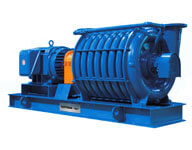
Rotary Blowers are simple in design, without valves, sliding vanes, springs, or other delicate parts to wear, break, or become noisy. All the parts are made of the best grade of material obtainable to carry the stresses placed on each particular piece. Low bearing and gear tooth loads, and small clearances between operating parts, enable these blowers to maintain their original efficiency for many years.
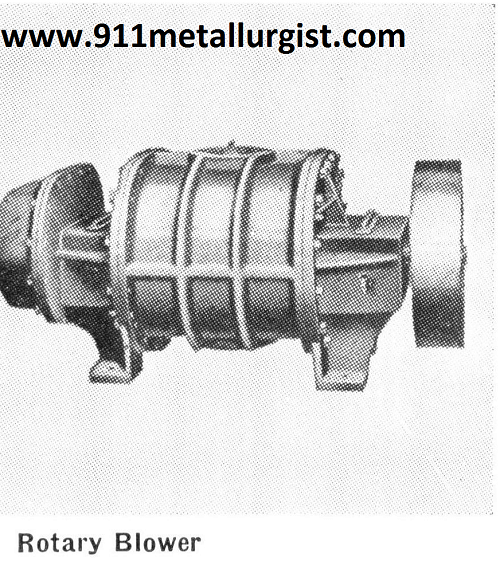
Supercharger Blower is an ideal unit for supplying low-pressure air to the “Sub-A” Flotation Machine. It is also used for supplying low-pressure air to oil and gas-fired furnaces and pneumatic conveyors, for agitation of liquids and pulps, for ventilation, or exhausting and for many applications. This unit is a centrifugal type turbo-compressor which delivers air at varying volume, with a uniform pressure, eliminating the necessity of any adjustment of the blast gate at each change of load. The Supercharger is arranged with an impeller or impellers mounted directly on the motor shaft. The impellers are fabricated from carefully selected metal, riveted or welded to strong, light-weight hubs. A special heat- treated aluminium alloy or steel of high tensile strength is used, depending upon the type and size of the machine. Each impeller is balanced several times during the process of construction, both statically and dynamically. Clearances between the moving and stationary parts are not less than 1/8 inch to prevent wear and to help reduce surging at light loads, and also result in a minimum fluctuation of pressure from no load to full load. The shafts on the direct-connected machine are of ample size to support the impellers without any bearings other than those of the motor. The motor is supported by a cast bridge work mounted within the casing which evenly distributes the weight. The casing is made of heavy copper-bearing sheet steel, and the motor mounting. The casings can be built with the discharge in any of four positions. No special foundations are necessary, and the compressor can be mounted anywhere without bolting down.
Single-stage machines offered for installation where low first cost is desired, will deliver reliable air service in pressure from 4 to 16 ounces and in volumes from 110 to 2350 cubic feet per minute.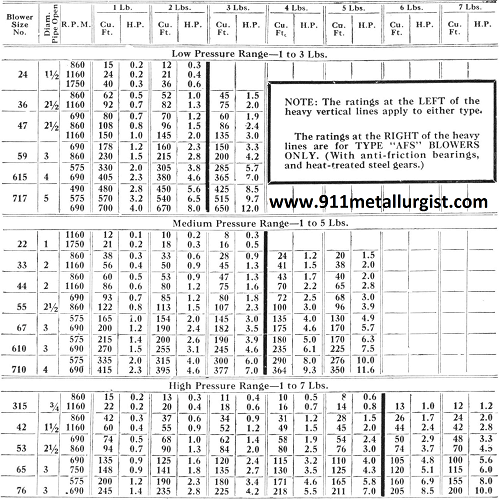
The multi-stage machines are available in two types: one designed to operate at 1750 RPM and the other at 3500 RPM in more than 150 standard ratings. The low-speed units are normally furnished in pressures from 8 ounces to two pounds and in volumes up to 20,000 cu. ft. per minute. The high-speed multi-stage machines permit going to the higher pressures without the use of step-up gears or running at excessive peripheral speed, and are available in pressures from 8 ounces up to 5 pounds and in volumes up to 6000 cubic feet per minute. Blast gates can be supplied for regulating the quantity of air.
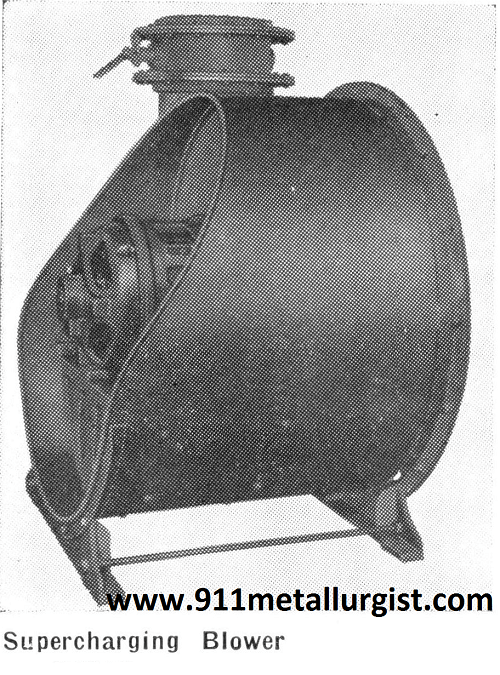
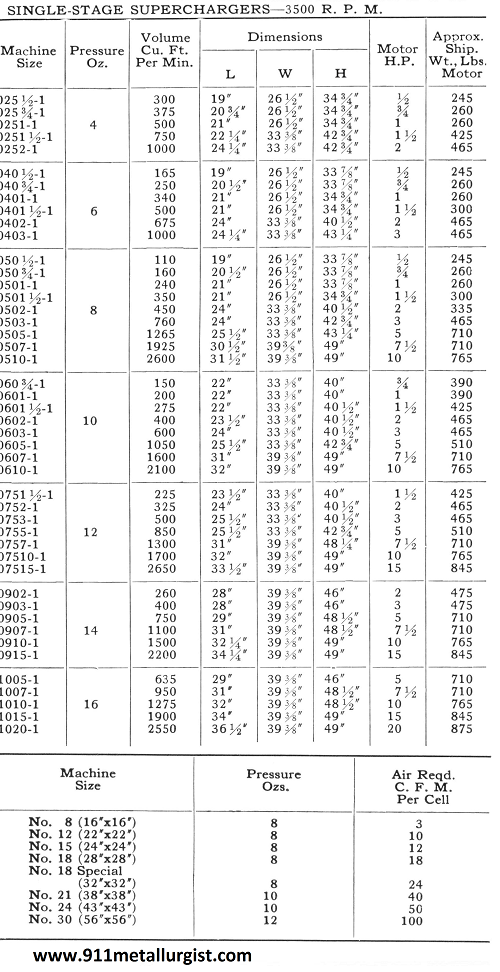
Supercharger Laboratory Blower
The Laboratory Supercharger Blower is used for supplying low-pressure air to the No. 8 “Sub-A” Flotation Machine when supercharging is desired.
In addition to application as a supercharger this blower may also be used for supplying low-pressure air for oil and gas-fired furnaces, pneumatic conveyors, agitation of liquids and pulps, for ventilation or exhausting and many other applications.
This unit consists of a compact, very sturdily built, centrifugal type turbo-compressor which delivers air at varying volume, but with a uniform pressure. The necessity of adjustment of the blast gate at each change of load is thereby eliminated. Impeller is mounted directly on the motor shaft. Casings can be built with the discharge in any of four positions. No special foundations are necessary, and the compressor can be mounted anywhere without bolting down. Single-stage machines are offered for installations where low first cost is desired and these units will deliver reliable air service in pressures from 4 to 16 ounces and in volumes from 110 to 2350 cubic feet per minute.
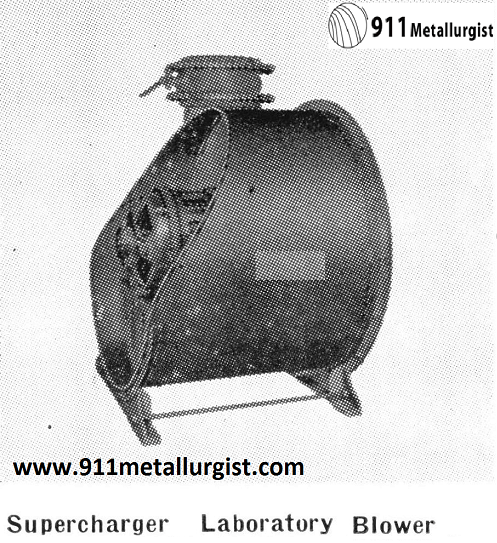
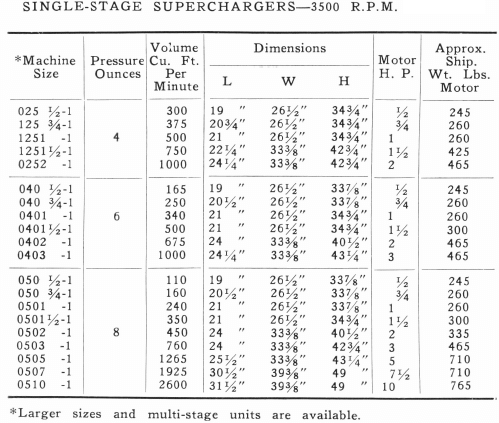
Flotation Blowers
The Roots type of blower is generally used to supply the air requirements of pneumatic and air-lift flotation machines. The construction of the High-Pressure High-Speed “ B.H.S.” Type Boots Blower is shown in Fig. 47. Table 29 gives particulars of the various sizes and Table 30 the power requirements at different pressures as determined by actual tests.
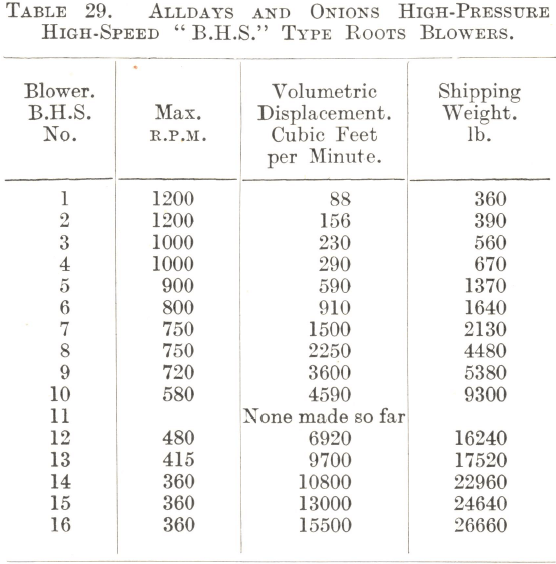
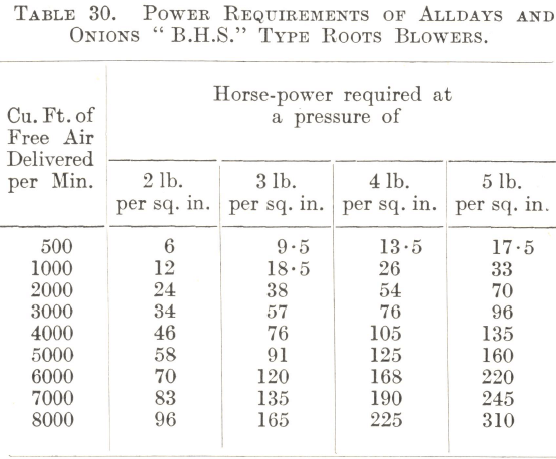
The two revolving rotors run in a housing which forms the body of the machine ; they are geared together and are so shaped that they are practically touching at one point throughout the whole of every revolution, the clearance between them at that point being of the smallest possible dimensions short of actual contact. There is a similar clearance between the outer peripheral faces of the rotors and the housing. The air intake is generally situated on the underside of the machine with the discharge outlet at the top, but the blower can be run in the reverse direction if desired. An “ Upright ” type is also made with the intake at one side and the outlet at the other. Each rotor, as it revolves, entraps a certain volume of air between itself and the housing twice per revolution and delivers it to the main air-delivery pipe. The slippage of air through the clearance space between each rotor and the housing and between the rotors themselves is so small that the blower works very efficiently up to pressures of about 5 lb. per square inch. The slip varies as the square root of the discharge pressure. To keep it at a minimum the rotor faces are accurately machined, the rotor shafts are carried in roller bearings large enough to reduce wear to negligible proportions, and the gearing between the two shafts is provided with strong teeth of fine pitch in order to maintain accurately the relative positions of the rotors. The blower can be driven by belt and pulley, but it is very suitable for the more compact direct motor drive.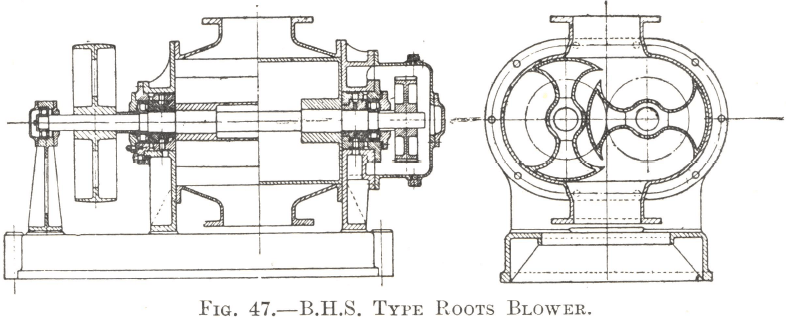
One advantage of this type of blower is that no lubrication is needed in the housing since there is no rubbing contact inside it. Oil can only enter from the end-plate bearings, and the leakage from this source is almost negligible, but since cases have occurred in which lubricating oil has entered a flotation machine as a fine suspension in the air supply and interfered with its operation, the blower can be supplied, if required, with independent bearings well clear of the end-plates of the housing ; there is then no possibility of the air becoming contaminated with lubricant.
 |
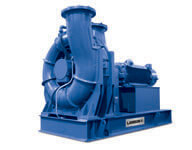 |
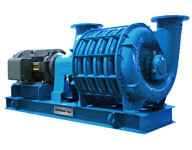 |
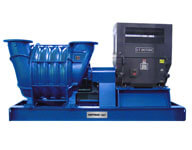 |
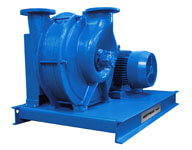 |
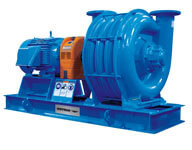 |
